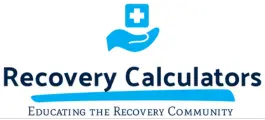Opioid Risk Tool
The Opioid Risk Tool (ORT) is one of helpful risk assessment tools used by doctors to check the risk of patients misusing opioids. It uses a simple questionnaire that asks about personal and family history with substance abuse, age, and mental health.
By quickly assessing the chance of opioid addiction, the ORT helps manage the opioid crisis more effectively. It aids doctors in making safer decisions about prescription opioids, ensuring pain treatments are suitable and safe for each patient.
Questions answered in this article:
Our Alcohol Addiction Treatment Programs

Scottsdale Rehab
Luxury Personalized Rehab

HART Rehab
Holistic Luxury Personalized Rehab

Scottsdale Detox
Luxury Medical Detox
What is the Opioid Risk Tool?
The Opioid Risk Tool (ORT) is a short questionnaire used by doctors to evaluate the risk of a patient misusing opioids. It asks about factors like personal and family history of substance abuse, age, and mental health. By identifying those at higher risk, it helps doctors prescribe opioids more safely and appropriately.
Why ORT is Needed?
The ORT is needed to help doctors identify patients who might be at higher risk of misusing opioids. By knowing this risk, doctors can make better decisions about prescribing these powerful painkillers. This helps prevent opioid addiction and ensures safer pain management for patients.
What Should the ORT Be Used for?
The ORT should be used to screen patients before prescribing opioids to see if they are at risk of misuse. This tool helps doctors decide if opioid painkillers are a safe option for each patient. It also guides doctors in creating safer, personalized pain management plans.Does the ORT Work?
Yes, the ORT works by helping doctors identify patients who might misuse opioids. It is a quick and easy questionnaire that provides valuable information about a patient’s risk factors. Studies have shown that it is effective in guiding safer prescribing practices and reducing the chances of opioid use disorder.ORT Alternatives
Pain Medication Questionnaire (PMQ)
The Pain Medication Questionnaire (PMQ) is a screening tool used by healthcare providers to evaluate a patient’s history and aberrant behaviors regarding pain medication, especially opioids. It includes questions about the patient’s pain severity, past use of pain medications, adherence to prescribed regimens, and any concerns or issues related to pain management.
Addiction Behaviors Checklist
The Addiction Behaviors Checklist (ABC) is a tool used by healthcare providers to monitor behaviors in patients who are receiving opioid therapy. It helps identify signs of addiction by tracking specific behaviors, such as frequent requests for early refills or reports of lost prescriptions. The checklist is used regularly to ensure patients are using opioids safely and to adjust treatment plans if necessary.
Current Opioid Misuse Measure (COMM)
The Current Opioid Misuse Measure (COMM) is a questionnaire used by healthcare providers to assess whether patients currently using opioids are misusing them. It includes questions about behaviors and feelings related to opioid use, such as using opioids for reasons other than pain relief or feeling a strong urge to use them. The COMM helps doctors identify misuse early and make necessary changes to the patient’s treatment plan to ensure safe use.
Brief Risk Questionnaire (BRQ)
The Brief Risk Questionnaire (BRQ) is a screening tool used by healthcare providers to quickly assess the risk of opioid misuse in patients. It consists of a short series of questions about a patient’s history and behaviors related to substance use. The BRQ helps doctors identify patients who might be at higher risk and guides them in making safer prescribing decisions.
What is the Next Step When at Risk?
If your ORT score is very high, your doctor will likely take extra precautions before prescribing opioids. This might include considering alternative pain management options, referring you to a specialist, or closely monitoring your use of any prescribed opioids. The goal is to manage your pain safely while minimizing the risk of addiction.
When faced with a high ORT score indicating a potential risk of opioid misuse, doctors may consider several alternative pain management options. These can include:
- Non-opioid medications: Prescribing medications such as nonsteroidal anti-inflammatory drugs (NSAIDs), acetaminophen (Tylenol), or antidepressants that can help manage pain without the risk of opioid addiction.
- Physical therapy: Referring patients to physical therapy sessions that can include exercises, stretches, and techniques to alleviate pain and improve mobility.
- Interventional procedures: Recommending procedures like nerve blocks, steroid injections, or minimally invasive surgeries to target and relieve pain at its source.
- Behavioral therapy: Referring patients to counseling or cognitive-behavioral therapy (CBT) to help manage chronic pain through psychological techniques.
- Complementary therapies: Suggesting alternative treatments such as acupuncture, massage therapy, or chiropractic care, which may provide pain relief and improve overall well-being.
- Lifestyle modifications: Encouraging patients to adopt healthy habits such as regular exercise, proper nutrition, stress management techniques, and adequate sleep, which can contribute to pain management.


